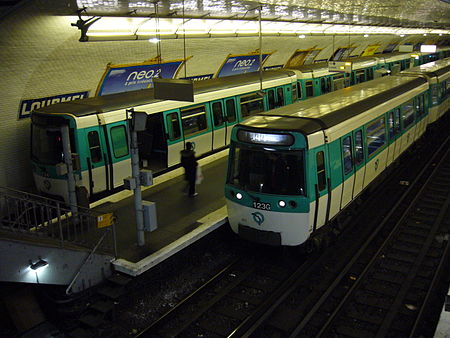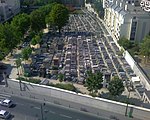Lourmel (Paris Métro)
Paris Métro line 8Paris Métro stations in the 15th arrondissement of ParisParis Métro stubsRailway stations in France opened in 1937

Lourmel (French pronunciation: [luʁmɛl]) is a station on line 8 of the Paris Métro in the 15th arrondissement. The station was opened on 27 July 1937 as part of the extension of line 8 from La Motte-Picquet - Grenelle to Balard. The station is named after the Rue de Lourmel, named after General Frédéric Henri Le Normand de Lourmel, who was killed at the Battle of Inkerman where the Franco-British armies defeated the Russian armies under Alexander Sergeyevich Menshikov during the Crimean War.
Excerpt from the Wikipedia article Lourmel (Paris Métro) (License: CC BY-SA 3.0, Authors, Images).Lourmel (Paris Métro)
Avenue Félix Faure, Paris 15th Arrondissement (Paris)
Geographical coordinates (GPS) Address Nearby Places Show on map
Geographical coordinates (GPS)
| Latitude | Longitude |
|---|---|
| N 48.838604 ° | E 2.281817 ° |
Address
Société Générale
Avenue Félix Faure 108
75015 Paris, 15th Arrondissement (Paris)
Ile-de-France, France
Open on Google Maps









